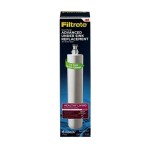Pvc Pipe Under Sink Leaking
A leaking PVC pipe under the sink can be a frustrating and potentially damaging problem. Water damage can quickly spread, causing costly repairs and even health hazards if not addressed promptly. This article will provide a comprehensive guide to help you identify, locate, and repair a leaking PVC pipe under your sink. We will cover the tools and materials required, step-by-step instructions, and tips for preventing future leaks.
Identifying the Leak
Before you can repair a leak, you need to identify the source of the problem. Here are some signs to look for:
- Visible water dripping or pooling under the sink
- Mold or mildew growth around the pipes
- Musty or damp odor
- Increased water bills
Once you have identified the leak, you can begin the repair process.
Locating the Leak
If the leak is not immediately visible, you may need to use a flashlight or mirror to inspect the pipes under the sink. Look for cracks, holes, or loose fittings. You can also run water through the pipes and listen for the sound of dripping or hissing, which can help you pinpoint the source of the leak.
Tools and Materials
To repair a leaking PVC pipe, you will need the following tools and materials:
- Adjustable wrench
- PVC pipe cutter
- PVC primer
- PVC cement
- Replacement PVC pipe (if needed)
- Sandpaper or emery cloth
- Rags or paper towels
Step-by-Step Instructions
Once you have gathered the necessary tools and materials, you can begin the repair process:
- Turn off the water supply to the sink.
- Open the faucet to release any remaining water from the pipes.
- Cut out the damaged section of PVC pipe using the PVC pipe cutter.
- Clean the ends of the pipes and fittings using sandpaper or emery cloth.
- Apply PVC primer to the ends of the pipes and fittings.
- Apply PVC cement to the ends of the pipes and fittings.
- Insert the pipes into the fittings and twist them together until they are hand-tight.
- Use the adjustable wrench to tighten the fittings further, but do not overtighten.
- Allow the PVC cement to cure for the recommended amount of time, typically 24 hours.
- Turn on the water supply and check for leaks.
If you are replacing a section of PVC pipe, follow the same steps as above, making sure to cut the new pipe to the correct length.
Tips for Preventing Future Leaks
Here are some tips to help prevent future PVC pipe leaks:
- Inspect your PVC pipes regularly for cracks or damage.
- Tighten any loose fittings.
- Protect the pipes from extreme temperatures.
- Use caution when using heavy or sharp objects around the pipes.
- Consider using leak-proof fittings and connections.
By following these tips, you can help prevent costly repairs and keep your plumbing system running smoothly.

4 Simple Ways To Fix A Leaky Sink Drain Pipe Wikihow

How To Fix Kitchen Sink P Trap Leaking Pipe Connection Nut

4 Simple Ways To Fix A Leaky Sink Drain Pipe Wikihow

Leak How To Fix Leaking Bathroom Sink Drain Where Pvc Meets Abs Connection Home Improvement Stack Exchange

Why Is My Kitchen Sink P Trap Leaking At Connection Nut Youtube

How To Repair A Leaking Sink Trap

Leaking Pipe Beneath Sink Hometalk

Easy Ways To Fix A Leaky Sink Trap 12 Steps With Pictures

How To Fix Or Replace A Leaky Sink Trap Hometips

Plumbing Drain Trap Leaking At Compression Joint Home Improvement Stack Exchange







